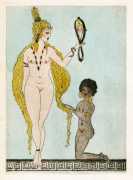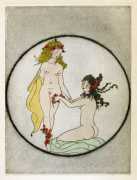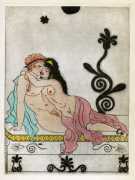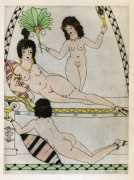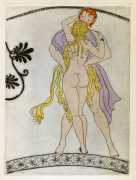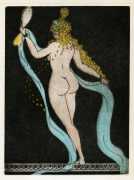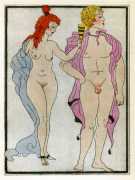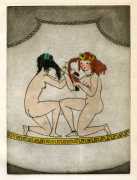 Aphrodite: mœurs antiques (Aphrodite: Ancient Morals) was the highly popular 1896 novel that brought Pierre Louÿs to wide public attention. It tells the story of Chrysis, a courtesan, and the sculptor Démétrios, and is the classic theme of spurned love which turns into obsession and punishment, with the underlying message of the limits of mortality. Louÿs originally intended his novel to be published in a limited edition for his friends, but a glowing review by François Coppée in the Mercure de France, helped to no small extent by the libertine scenes scattered throughout the book, turned Aphrodite into a bestseller, inspiring artists, sculptors and composers to produce works based on the novel.
Aphrodite: mœurs antiques (Aphrodite: Ancient Morals) was the highly popular 1896 novel that brought Pierre Louÿs to wide public attention. It tells the story of Chrysis, a courtesan, and the sculptor Démétrios, and is the classic theme of spurned love which turns into obsession and punishment, with the underlying message of the limits of mortality. Louÿs originally intended his novel to be published in a limited edition for his friends, but a glowing review by François Coppée in the Mercure de France, helped to no small extent by the libertine scenes scattered throughout the book, turned Aphrodite into a bestseller, inspiring artists, sculptors and composers to produce works based on the novel.
Clara Tice produced ten etchings for this English-language translation; 650 numbered copies were printed, of which 100 included hand-coloured plates. The non-prurient depiction of genitalia of both sexes by an American artist, especially by a woman, was very advanced for the time, and was no doubt beneficial to sales.
The English translation of Aphrodite was banned by US Customs for many years; reviewer Dorothy Parker noted how difficult it was to obtain in New York, and that a play by George Hazelton based on the book was successful mainly because it had been denounced as obscene by the city’s mayor.


